Disclosure: This article contains affiliate links. We may earn a commission from purchases at no extra cost to you, which helps our travel content.
The first light of dawn filters through my window at Amankora Bumthang, painting the wooden beams in hues of amber and gold. Outside, prayer flags flutter in the gentle breeze, their colors vibrant against the backdrop of pine-covered mountains. Two weeks ago, I arrived in Jakar, the heart of Bhutan's spiritual Bumthang Valley, seeking something I couldn't quite articulate—perhaps the same ineffable quality that draws so many to this Himalayan kingdom. As someone who has spent years navigating the chaotic streets of Seoul behind a bus wheel, the deliberate slowness of life here initially felt almost disorienting. Yet in this land where GNH (Gross National Happiness) trumps GDP, I've discovered a rhythm that resonates with the Japanese concept of yūgen—a profound awareness of the universe too deep for words.
The Sacred Arrival: Navigating Jakar's Spiritual Landscape
Landing at the tiny Bathpalathang Airport feels like stepping into another era. Unlike the polished efficiency of Seoul's Incheon or the controlled chaos of Bangkok's Suvarnabhumi, this humble airstrip nestled among terraced fields offers a gentle introduction to Bhutan's pace. My guide Dorji—who would become both teacher and friend over the coming days—greeted me with a traditional white silk scarf, a khadar, symbolizing purity and compassionate intentions.
The 15-minute drive to Amankora Bumthang winds through landscapes that seem painted rather than real. Jakar sits at approximately 2,600 meters above sea level, and the thin mountain air carries a sweetness from the surrounding blue pine forests. My grandmother, with her extensive knowledge of energy work, would say this place has exceptionally strong ki—life force—flowing through it.
"The valley is considered our most sacred," Dorji explains as we pass a small group of elderly villagers circling a chorten (stupa) in silent meditation. "People say Bumthang Valley is where Buddhism first took root in Bhutan."
After settling into my suite at Amankora—a masterclass in understated luxury with its terrazzo-clad bathtub, wood-burning stove, and panoramic views—I unpack my travel journal and begin what will become a daily ritual: documenting the subtle shifts in my perception as Jakar works its magic on my city-worn spirit.
That evening, I join a private blessing ceremony at Kurjey Lhakhang, one of Bumthang's most significant temple complexes. The head lama places a small amulet around my neck—protection for my journey, both physical and spiritual. As butter lamps flicker against ancient walls adorned with intricate paintings of deities and demons, I feel the weight of centuries pressing against my skin. There is wisdom here, preserved like amber, waiting for those patient enough to receive it.

💡 Pro Tips
- Arrange a blessing ceremony at Kurjey Lhakhang in advance through your hotel or guide for a deeply personal experience
- Pack respectful attire for monastery visits—shoulders and knees must be covered
- Bring small, thoughtful offerings for monks and temples (incense, white scarves, or donations are appropriate)
The Luxury of Simplicity: Accommodations in the Valley
Bhutan's approach to tourism—high value, low impact—means that luxury here takes on a different dimension than elsewhere in Asia. My temporary home, Amankora Bumthang, epitomizes this philosophy with its minimalist design that draws the eye constantly outward to the surrounding natural beauty.
The lodge, set within the grounds of a former royal palace, houses just 16 suites—ensuring personalized attention that borders on prescient. When I mention to the manager my interest in traditional medicine during check-in, I return from an afternoon hike to find a selection of Bhutanese herbal teas and a handwritten note explaining their properties waiting in my room.
Each morning begins with yoga on a private deck overlooking the valley, led by an instructor who studied both in India and Japan. The sessions incorporate elements of Bhutanese Buddhist meditation practices, creating a fusion experience that feels perfectly aligned with my own mixed heritage and spiritual interests.
"In Bhutan, luxury is space, silence, and time," explains Tshering, the lodge manager, as we sip butter tea beside a crackling fire one evening. "These are becoming the rarest commodities in the modern world."
For those seeking an even more immersive experience, I spent two nights at the family-owned Wangdicholing Heritage Lodge, a beautifully restored traditional home where sustainability meets comfort. My room featured handwoven textiles, locally crafted furniture, and floor-to-ceiling windows framing views of Jakar Dzong fortress. Each morning, I would wrap myself in the lodge's cashmere travel wrap, a travel essential that proved perfect for Bhutan's cool mornings, and watch the sunrise paint the valley in watercolor hues.
The true luxury of Jakar, however, lies in its profound silence. No traffic noise, no commercial jingles, no constant notifications—just the occasional monastery bell, the whisper of prayer flags, and the sound of your own thoughts finally having space to breathe.

💡 Pro Tips
- Book accommodations at least 6 months in advance as luxury options in Jakar are limited
- Request a room with a view of Jakar Dzong for spectacular morning vistas
- Pack layers—even luxury accommodations can be cool at night due to the elevation
Market Medicine: Healing Traditions in Bumthang Valley
My years navigating Seoul's bustling streets as a bus driver have given me an uncanny ability to sniff out authentic local markets wherever I travel. In Jakar, the Thursday farmers' market became my weekly pilgrimage—a sensory expedition that connected me to the valley's healing traditions in ways no luxury wellness treatment could match.
"These are not just ingredients; they are medicine," explains Aum Dema, an elderly woman whose weathered hands sort through a rainbow of dried herbs at her market stall. Through my guide's translation, I learn that the bright orange cordyceps (a fungus highly prized in traditional medicine) she sells are harvested at elevations above 4,000 meters during specific moon phases to maximize their potency.
Unlike the polished displays of wellness products in high-end spas, Jakar's market offers healing traditions in their raw, unfiltered form. Bundles of artemisia hang beside sacks of Himalayan rock salt. Locally harvested honey—believed to treat everything from digestive issues to spiritual imbalances—is sold in recycled bottles with handwritten labels.
My grandmother would have spent days here, I think, as I carefully select items for my own collection. I purchase a small pouch of pemba (medicinal incense), some dried mushrooms known for their immune-boosting properties, and a hand-carved wooden cup for drinking hot spring water—a practice recommended by a local healer for balancing energy.
Beyond the market, Jakar offers several natural hot springs where healing waters emerge from deep within the earth. At Gasa Hot Springs, a two-hour drive from town, I spend an afternoon soaking in mineral-rich pools alongside local families and the occasional red-robed monk. The waters here are said to contain over 20 different minerals beneficial for various ailments.
To document these experiences, I rely on my weatherproof notebook, which proves invaluable during unexpected mountain showers and misty mornings by the hot springs. Its pages now contain pressed herbs, sketches of market stalls, and notes on traditional remedies that I hope to incorporate into my daily wellness practices back in Seoul.

💡 Pro Tips
- Visit the market early (before 8am) to watch locals trade medicinal herbs and discuss their properties
- Bring small denominations of Bhutanese ngultrum for market purchases
- Ask permission before photographing market vendors or their medicinal items
Forest Bathing and Conservation: The Sacred Groves of Bumthang
My environmental conservation background drew me inevitably to Bhutan's pioneering approach to protecting natural resources. The country's constitution mandates that 60% of its land remain forested in perpetuity—a commitment that becomes tangibly real during my guided trek through the sacred groves surrounding Jakar.
"These trees are our oldest teachers," says Karma, my forest guide and a former monk who now works with the Royal Society for Protection of Nature. We're standing in a grove of ancient blue pines, some estimated to be over 500 years old. The forest floor is carpeted with moss so thick it feels like walking on memory foam, and the air carries a resinous scent that seems to clear not just my sinuses but something deeper within me.
The concept of forest bathing (shinrin-yoku in Japanese) originated in my mother's homeland, but here in Bhutan's sacred groves, the practice takes on additional spiritual dimensions. Karma guides me through a meditation beside a tree that local traditions say was blessed by Guru Rinpoche, the revered figure who brought Buddhism to Bhutan in the 8th century.
"Place your hands on the trunk, close your eyes, and just breathe with the tree," he instructs. The exercise sounds simple, perhaps even naive to my urban-trained mind, but the effect is profound. Twenty minutes later, I emerge from the meditation with a clarity I haven't experienced in months of Seoul's constant stimulation.
For those interested in Bhutan's conservation efforts, I arranged a special meeting with researchers at the Ugyen Wangchuck Institute for Conservation and Environmental Research, located just outside Jakar. Here, scientists combine modern research methodologies with traditional knowledge to address climate change impacts on Himalayan ecosystems.
"What makes Bhutan unique is that conservation isn't just policy—it's deeply cultural," explains Dr. Tshewang, who studies high-altitude medicinal plants. "Our Buddhist values teach that all sentient beings deserve protection."
For my forest expeditions, I relied heavily on my hiking boots, which provided excellent traction on the sometimes slippery forest paths while being comfortable enough for all-day wear. When tracking wildlife at dawn, my binoculars proved invaluable for spotting the elusive red pandas that inhabit these forests.
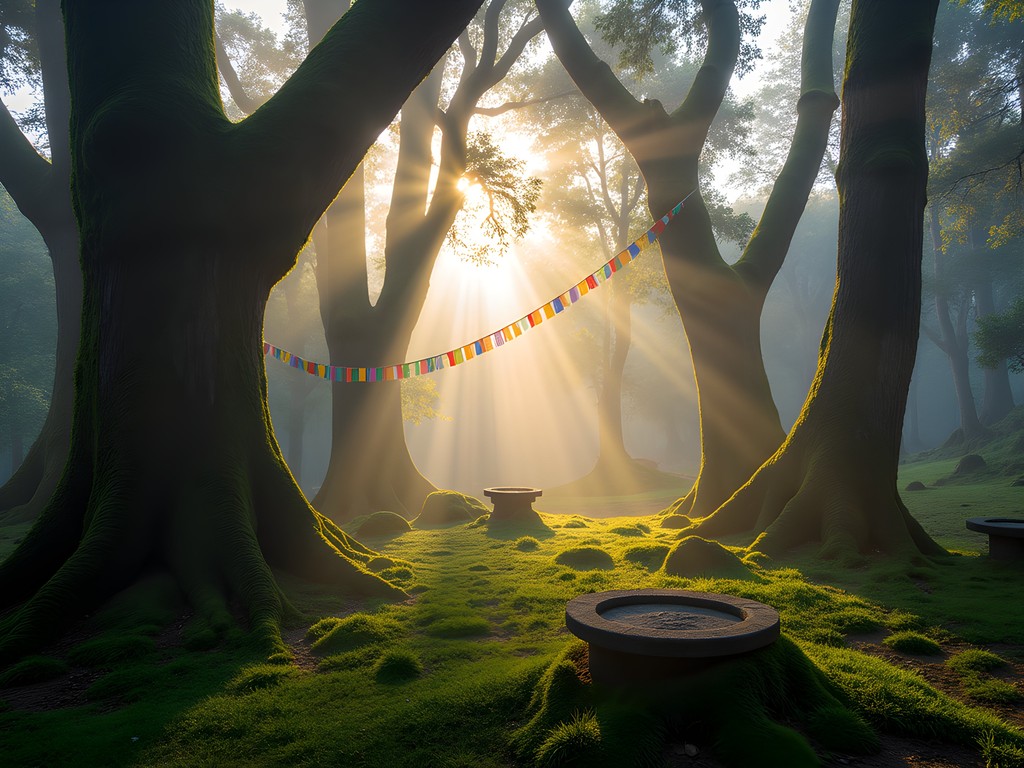
💡 Pro Tips
- Arrange specialized conservation tours through your hotel at least 3 days in advance
- Practice proper forest bathing by silencing your phone completely
- Donate directly to local conservation efforts rather than purchasing 'wildlife souvenirs'
Solo Rituals: Creating Personal Ceremonies in Sacred Spaces
There's a particular vulnerability to solo travel that strips away pretense and forces confrontation with oneself. In Jakar, I embraced this through daily rituals that became anchors in my journey—practices that merged luxury with mindfulness in ways uniquely suited to this sacred valley.
Each morning began with a ritual of my own creation: a pot of locally grown red rice tea served in a handcrafted ceramic cup, enjoyed on my private terrace as I watched the first light illuminate Jakar Dzong. This simple practice—part meditation, part gratitude exercise—set the tone for days filled with both adventure and introspection.
One particularly meaningful ritual emerged from my visit to Mebar Tsho (Burning Lake), one of Bhutan's most sacred sites. Here, the revered terton (treasure revealer) Pema Lingpa is said to have recovered sacred texts hidden by Guru Rinpoche. The site consists of a deep pool of turquoise water surrounded by prayer flags and small offering shrines.
Inspired by the devotees I observed, I began my own daily practice of writing a single intention or gratitude on rice paper each morning. In the evening, I would walk to a small stream near my accommodation and release the paper into the flowing water—a symbolic letting-go that became increasingly powerful as my stay progressed.
"Creating personal rituals in sacred spaces isn't appropriation if done with genuine respect," my guide Dorji assured me when I shared my practice with him. "It's conversation with the divine."
For solo female travelers, Bhutan offers a rare combination of safety and spiritual depth. I felt completely secure walking alone even in remote areas—a freedom that allowed for spontaneous encounters with local farmers, artisans, and monks that might not have occurred in a group setting.
One evening, I was invited to join a family's preparation of marchang, a traditional offering ceremony involving blessed rice wine. The grandmother of the household, noticing my interest in traditional practices, showed me how to arrange the symbolic elements and taught me the accompanying prayers. Though we shared no common language, our communication through gesture and shared intention created a bond that transcended words.
These personal rituals—some borrowed, some created—became the true luxury of my solo journey through Jakar. They provided structure without rigidity and meaning without prescription, allowing me to process the profound experiences this valley offered at my own pace.
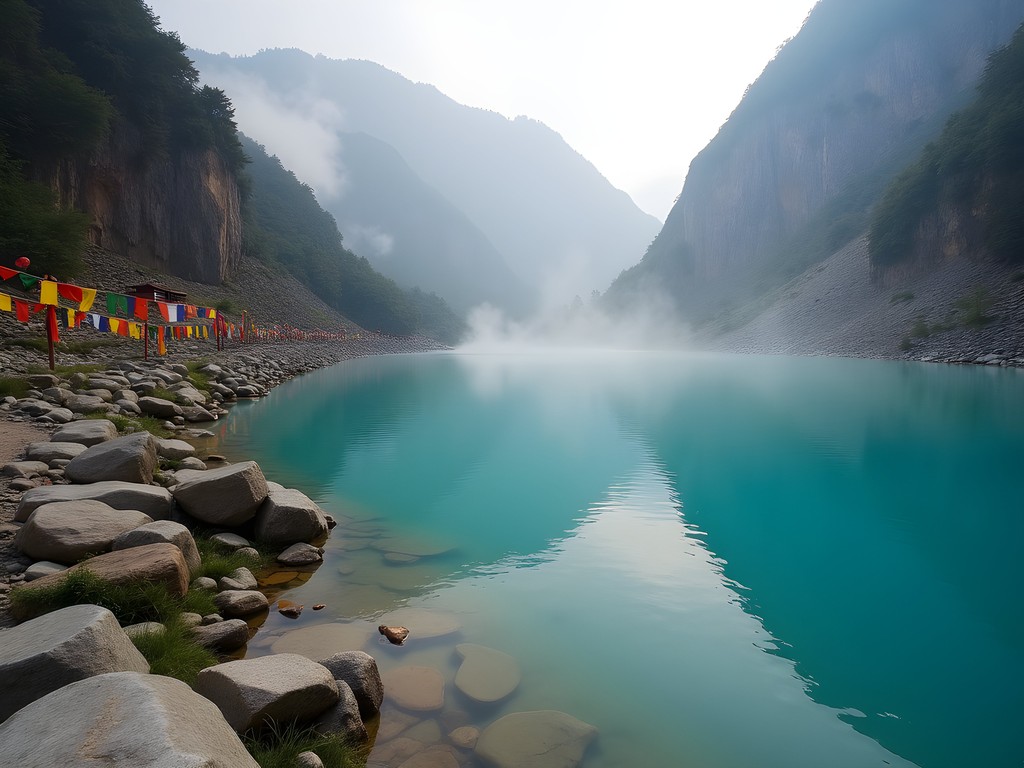
💡 Pro Tips
- Create a simple morning ritual that connects you to your surroundings
- Carry a small offering (like incense or a candle) for impromptu sacred moments
- Journal daily to process the intense spiritual experiences Jakar often evokes
Final Thoughts
As my two weeks in Jakar draw to a close, I find myself sitting cross-legged on a flat stone overlooking the valley, watching twilight transform the landscape into a watercolor of purples and blues. The monastery bells ring for evening prayers, and I press my palms together in gratitude. What began as a luxury solo journey has evolved into something far more valuable—a recalibration of my inner compass.
Jakar has taught me that true luxury lies not in thread counts or exclusive access, but in moments of profound connection—with nature, with ancient wisdom, and with oneself. The practices I've gathered here will travel home with me, small flames of mindfulness to illuminate my daily life in Seoul.
For those called to this sacred valley, come with an open heart and unhurried schedule. Bhutan doesn't reveal its treasures to those rushing from one Instagram moment to the next. Instead, it rewards the patient traveler—the one willing to sit in silence, to listen to ancient forests, and to find luxury in the spaces between breaths.
✨ Key Takeaways
- Solo travel in Bhutan offers unique opportunities for spiritual growth and personal ritual creation
- Luxury in Jakar is defined by meaningful experiences rather than opulence
- Connecting with local healing traditions provides deeper cultural understanding than standard tourist experiences
📋 Practical Information
Best Time to Visit
September to November (Fall)
Budget Estimate
$300-500 per day (including mandatory daily tariff)
Recommended Duration
Minimum 7 days, ideally 14 days
Difficulty Level
Moderate To Challenging (High Altitude, Remote Location)









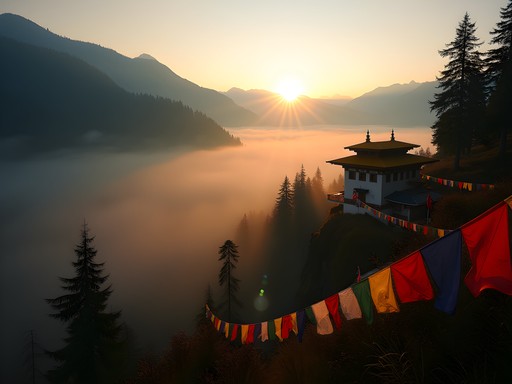
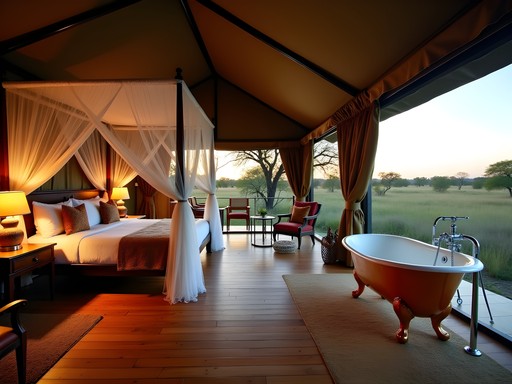
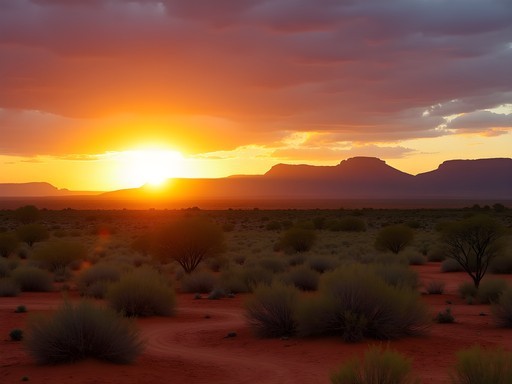



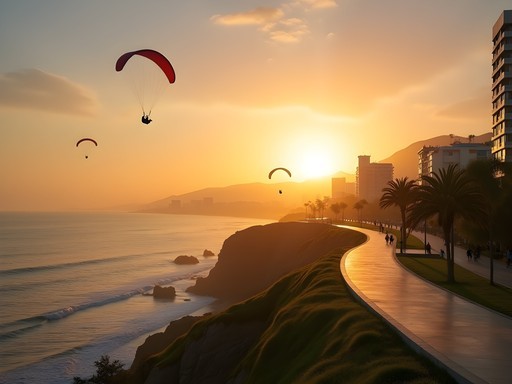
Comments
journeylife
Beautiful photos! The prayer flags look so vibrant.
luckypro7724
OMG this is EXACTLY what I needed to read right now!!! I've been feeling so burned out at work and dreaming about a mindful escape. Your descriptions of the prayer flags and those morning meditations are giving me LIFE! Did you feel safe traveling solo there as a woman? Also, what kind of shoes did you bring for hiking? I'm thinking of packing my hiking boots but not sure if they're overkill!
Kinsley Andrews
Bhutan is incredibly safe for solo female travelers! I never once felt uncomfortable. For footwear, I actually just used sturdy trail runners for most hikes, but proper hiking boots would be perfect for the Tiger's Nest trek - it gets steep in parts!
luckypro7724
Thank you so much!! This is going on my vision board for next year's big trip! ✨🙏
Douglas Bradley
Your description of forest bathing in the sacred groves resonated deeply with me. I visited Bumthang last year and found the connection between conservation and spirituality fascinating. The locals' reverence for these spaces creates a unique atmosphere that's difficult to find elsewhere. I'd add that timing is crucial - I found early mornings at Kurjey Lhakhang particularly powerful before other tourists arrived. Did you have a chance to participate in any of the local archery competitions? They provide another interesting window into Bhutanese culture that complements the meditative aspects of the journey.
Kinsley Andrews
I did catch an archery competition! It was fascinating watching the participants alternate between intense focus and celebratory dancing when they hit the target. Early mornings at the temples were magical - great tip about Kurjey Lhakhang.
vacationvibes
This looks incredible! How difficult was it to arrange the permits for Bhutan as a solo traveler? I've heard the daily tariff can be steep.
Kinsley Andrews
Thanks! Yes, the daily tariff is around $250 USD but it includes accommodation, transport, guide and meals. I worked with a local tour operator who handled all the permits. As a solo traveler, you still need to book through an agency, but you can request private tours!
vacationvibes
That's super helpful, thanks! Did you feel the guide was with you constantly or did you get some alone time for the mindfulness aspects?
Kinsley Andrews
Great question! I was upfront about wanting solo time for meditation and reflection. My guide was incredibly understanding - they were there when I needed cultural context but gave me space when I wanted it. Just communicate your needs clearly!
coffeemood
OMG your photos are STUNNING! That shot of prayer flags against the mountains literally made me gasp! Adding Jakar to my bucket list right now!!! 😍
Kinsley Andrews
Thank you so much! The light in Bhutan is a photographer's dream - those were just taken with my phone camera!
coffeemood
Wait, seriously? Just a phone? What kind do you use? My travel pics never turn out like that!
Kinsley Andrews
Just an iPhone 14 Pro! But honestly, it's all about the golden hour lighting. Try shooting within an hour of sunrise or sunset - makes all the difference!
Jean Wells
Your description of the morning light at Amankora Bumthang took me right back to my own stay there three years ago. The luxury of simplicity, as you aptly put it, is what makes Bhutanese accommodations so special. I found the integration of traditional architecture with modern amenities particularly thoughtful. However, I'd add that travelers should consider visiting during the Jambay Lhakhang Drup festival if possible - it adds another layer to the spiritual experience. The masked dances and fire ceremonies complement the forest bathing practices you described. Did you participate in any formal meditation retreats while there?
Kinsley Andrews
Great point about the Jambay Lhakhang Drup festival! I just missed it by two weeks. I did participate in a three-day meditation retreat at Dechen Phodrang monastery - not advertised to tourists but my guide arranged it after seeing my interest. It was challenging but transformative!
Jean Wells
Those unadvertised experiences are often the most meaningful. I'll have to inquire about Dechen Phodrang next time. I used my meditation cushion throughout my Bhutan journey and it made temple sits much more comfortable than the monastery floors!
moonlover
This is exactly the kind of mindful travel I've been dreaming about! How difficult was it to arrange the permits for Bhutan as a solo traveler?
Kinsley Andrews
Thanks for asking! The permit process has gotten easier in recent years. I went through a local tour agency that handled everything - cost about $200/day including guide, driver, accommodations, and meals. Worth every penny for the peace of mind!
moonlover
That's not as steep as I expected! Definitely adding this to my 2026 plans. Did you feel safe traveling solo there?
Kinsley Andrews
Absolutely! Bhutan is incredibly safe for solo travelers, especially women. The locals are respectful and helpful, and having a guide means you're never really alone unless you want to be.
travelmood
Just got back from Bhutan myself and your post captures the essence of Jakar perfectly! The Amankora was beyond my budget so I stayed at Mountain Lodge - more modest but still had those amazing valley views. The local cheese momos in Bumthang were incredible. Did you try the hot stone bath ritual? My muscles never felt better after all that hiking. Your section on the sacred groves inspired me to spend an extra day exploring them - such profound peace there.
travelmood
I went in early April - perfect weather! Clear skies, mild temps, and the rhododendrons were starting to bloom. Just occasional afternoon showers. Definitely bring layers though - mornings and evenings get chilly in the valleys.
sunnymaster
How was the weather when you went? Planning for next spring and trying to time it right!
Ahmed Palmer
Kinsley, your description of dawn at Amankora Bumthang transported me right back to my time in the Bumthang Valley. The spiritual landscape of Jakar is indeed transformative. I particularly appreciated your insights on forest bathing in the sacred groves - something I wish I'd explored more deeply during my visit. Did you find that two weeks was sufficient? I felt my one-week stay barely scratched the surface of what Bumthang had to offer, especially regarding the local healing traditions you mentioned. I'd recommend travelers bring a good meditation cushion for those morning sessions overlooking the valley - makes a world of difference for extended sits.
sunnymaster
This looks amazing! How difficult was it to arrange the permits for Bhutan as a solo traveler? I've heard they can be tricky.
Ahmed Palmer
Not Kinsley, but I went solo to Bhutan last year. The daily tariff system means you'll pay the same whether alone or in a group, but many agencies are happy to arrange solo trips. The visa process is straightforward if you go through an authorized tour operator. Worth every penny though!
sunnymaster
Thanks Ahmed! Good to know. Did you find the daily fee limiting at all?
Ahmed Palmer
It's steep but includes accommodation, transport, guide, meals, and entry fees. I actually found it liberating - no constant decisions about where to eat or stay. Just pure experience.
Venture X
Premium card with 2X miles, $300 travel credit, Priority Pass